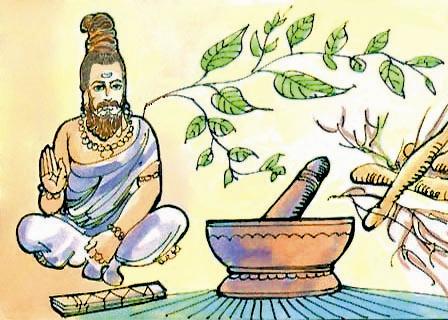COMPLEX SURGERIES PERFORMED WITH AMAZING FELICITY IN ANCIENT INDIA
Sushruta was an ancient Indian surgeon (who was possibly born in 7th century BC) and is the author of the book Sushruta Samhita, werein he describes about 120 surgical instruments, 300 surgical procedures and classifies human surgery into 8 categories.
In the Sushruta School, the first person to expound Ayurvedic knowledge was Dhanvantari who then taught it to Divodasa who, in turn, taught it to Sushruta, Aupadhenava, Aurabhra, Paushakalavata, Gopurarakshita, and Bhoja.
He is credited with performing cosmetic surgery and especially with using forehead skin to reconstruct noses, which were amputated as a punishment for crimes during his era.
This book describes the tradition of surgery in Indian medicine, which includes many detoxification therapies. The author is believed to be the scholar Sushruta, who lived over 3000 years ago. Susruta Samhita is considered one of the four principal books on surgery and the only one still existing. Susruta-Samhita discusses 1120 illnesses, including injuries, illness relating to aging and mental illness. These therapies include 700 healing plants, 57 preparations derived from animal sources and 64 preparations derived from minerals. In spite of the absence of anathesia, complex operations were performed. Shushruta specialised in ophthalmic surgery (extraction of Cataracts). A typical operation performed by Shushruta for removing cataracts is described below:
It was a bright morning. The surgeon sat on a bench, which was as high as his knees. The patient sat opposite on the ground so that the doctor was at a comfortable height for doing the operation on the patient’s eye. After having taken bath and food, that patient is tied so that he could not move during the operation.
The doctor warmed the patient’s eye with the breath of his mouth. He rubbed the closed eye of the patient with his thumb and then asked the patient to look at his knees. The patient’s head was held firmly. The doctor held the lancet between his fore-finger, middle-finger and thumb and introduced it into the patient’s eye towards the pupil, half a finger’s breadth from the black of the eye and a quarter of a finger’s breadth from the outer corner of the eye. He moved the lancet gracefully back and forth and upward. There was a small sound and a drop of water came out.
The doctor spoke a few words to comfort the patient and moistened the eye with milk. He scratched the pupil with the tip of the lancet, without hurting, and then drove the ‘slime’ towards the nose. The patient got rid of the ‘slime’ by drawing it into his nose. It was a matter of joy for the patient that he could see objects through his operated eye and the doctor drew the lancet out slowly. He then laid cotton soaked in fat on the wound and the patient lay still with the operated eye bandaged. It was the patient’s left eye and the doctor used his right hand for the operation.” Does this not sound like the detailed procedure and steps of a cataract operation by an ophthalmic surgeon? But Shusruta performed this operation around the 8th Century B.C.
To be continued….
For previous parts visit the following links:
http://anudinam.org/2012/10/12/ancient-india-reverberating-with-science-part-4/
http://anudinam.org/2012/08/23/ancient-india-reverberating-with-science-part-3/
http://anudinam.org/2012/07/17/ancient-india-reverberating-with-science-part-2/
http://anudinam.org/2012/07/12/ancient-india-reverberating-with-science/











Very Nice Article ..Very Good Useful Information ..